Switch Re:Port Review #50: God Eater 3, Clannad, Trine 3, Etherborn, Mutant Year Zero: Road to Eden
After a short break, the Switch Re:Port Review returns with some big releases across the last few weeks for the Nintendo Switch. This is the 50th Switch Re:Port Review and I’m glad to have done this for so long with the help of everyone on the team. Today’s feature includes Switch port reviews for Mutant Year Zero: Road to Eden Deluxe Edition, God Eater 3, and Trine 3 from Mick Fraser, Etherborn from Adam, and Clannad from me. If you’re new to the Switch Re:Port Reviews on the Geek, I (with the help of the fine folk here) look at the Switch ports of games that have been released on other platforms. These reviews aren’t just to talk about the game but to look at how the games run and play on the Switch and how they use the Switch features.
Etherborn
Adam Cook
Simultaneously released on PS4, Xbox One, Nintendo Switch, and PC and scored 5.5/10 on Xbox One
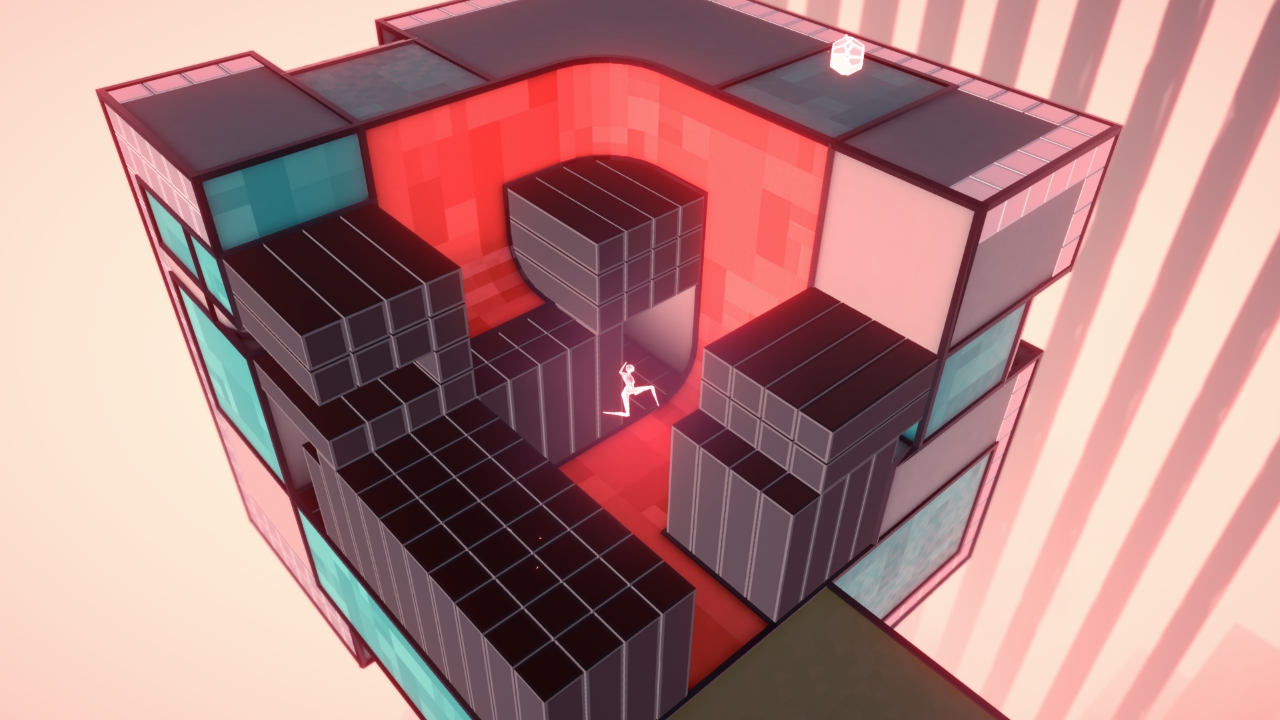
You know those games you want to like, but just can’t? We’ve all got a few of them, and Etherborn is the latest one for me. The design is incredibly clever, that’s for sure. There are plenty of mind-bending puzzles based around constant perspective change that are, no doubt, brilliantly designed, but they are just on the frustrating side of things that it’s a struggle to entirely connect with the game.
It doesn’t help, of course, that the narrative is incredibly self-serious. This is a game that believes it’s got something to say, and perhaps it will resonate with many, but it’s also a game that you play for five minutes and instantly know that it’ll look better on other consoles. The Switch version doesn’t look bad, really, but it’s just rough enough round the edges that I feel a cleaner, higher-resolution image would genuinely mesh better with the story of finding your purpose in the world has. There’s not a lot else to report with the Switch version, really. It runs just fine in handheld and in docked, and the dimensions of the game are such that not much is lost on the smaller screen.
I didn’t notice too much in the way of HD Rumble, and it’s not a deal breaker that the image quality is lower, but sometimes in a game where you’re staring at the same area for a while trying to understand the problem and create a solution by shifting perspective (this game seriously challenges your spacial awareness) I’d really recommend playing it on more powerful console, and I’d imagine it looks a lot better on PC. Regardless, this is perhaps one for people on a higher mental plane than I, because some of the puzzles really gave me a headache. It’s not bad, though, and while I won’t criticise the tone when it’s clearly going for that tone, but Monument Valley this is not.
5/10
Trine 3: The Artifacts of Power
Mick Fraser
Originally released on PS4, Xbox One, and PC
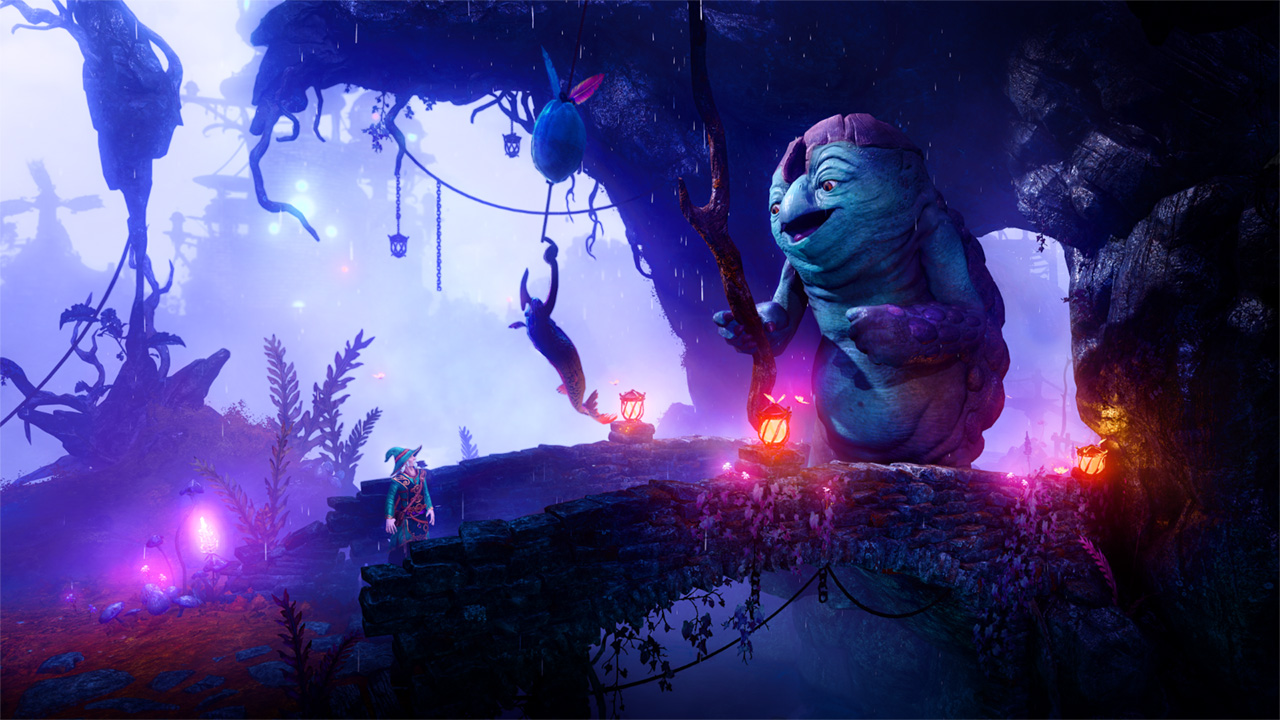
I remember first playing Trine 3: The Artifacts of Power with a touch of sadness. Having played and reviewed Trine 2 on about half a dozen different platforms and knowing exactly what to expect, Trine 3’s somewhat dumbed down approach to puzzles and shorter lifespan felt like huge steps back for the series. Budget constraints and set-backs were to blame, and what should have felt like the pinnacle of 2D adventure ended up being a bit of a disappointment to most.
The thing is though, playing it again a few years later on the Switch’s smaller screen, I’m appreciating it a lot more. It’s now been a long time since I played its superior predecessor, and so my judgment here isn’t muddied by my undying love for Trine 2 and, despite the easier puzzles, I can honestly say I’m enjoying Artifacts of Power a lot more.
Once again you take control of three heroes at once, and thanks to the power of the Trine are able to switch between them at will. Amadeus the wizard can manipulate the environment with telekinesis and conjure weighted blocks, Pontius the knight can fight off goblins, charge through obstacles and block projectiles, and Zoya the thief can swing across gaps, tether items together and fire arrows at distant targets. Now on a quest to free themselves from the Trine’s control, out heroes must traverse a colourful fantasy land, solving environmental quandaries and collecting “trineangles” to unlock future levels.
There are elements here that have been streamlined too. Pontius, for example, has lost his hammer attack and now just smashes things with his shield, while Zoya can now tether items to certain surfaces, but can only fire one type of arrow. It serves to make the puzzle element much less taxing, and also makes playing with more than one person feel a little pointless and crowded. While it’s still nice to get a friend to control the other characters so Zoya can, for example, ride on Pontius shield to reach a higher ledge, it also feels pretty superfluous, as there’s never a reason to do it. You can do everything alone by switching between characters and everything else is a bit pointless.
Switching from 2D to 3D environments is a massive plus though. Frozenbyte are visual geniuses, crafting worlds of such exquisite beauty and dazzling colour that it’s hard not to be completely entranced by it. Blues and greens and oranges and golds blend together in displays of pure artistry, and environments that always seemed to be deeper than they were now are. Although the camera is fixed and can sometimes obscure what you’re doing, it’s not as much of a problem as simply wrapping your head around the fact that the screens now have depth and you can easily jump in the wrong direction.
The writing is still as charming as ever. In fact, the whole experience is, if I’m totally honest. So it lost more than it gained between entries 2 and 3, and you can decide for yourself how much of a pass Frozenbyte get for essentially running out of time and money, but the simple truth is that Trine 3 is still a very enjoyable game, it’s just not as good, not as complete, not as well-rounded as earlier entries.
As for the Switch version, it’s a shame to not see touchscreen controls added. Amadaeus’ magic works really well with a touchscreen, though I imagine when Trine 3 debuted no one expected to be designing it for another handheld. It’ll be interesting to see if Trine 4 brings them back when it launches this Autumn. That said, it looks beautiful, utterly stunning in fact, on the small screen, and even stands up nicely when docked. The colours are mesmerising, and there are times where you just want to stand in one place and look at the lighting and particle effects at play.
Sadly, it’s not enough to just look good, and Trine 3 is lacking in several key areas, but it’s still a decent enough romp despite this. It’s hardly the definitive edition, or the definitive game in the series, but if you missed it and you’re gearing up for the release of 4, it’s worth checking out.
6.5/10
Mutant Year Zero: Road to Eden Deluxe Edition
Mick Fraser
Originally released on PS4, Xbox One, and PC and scored 8.5/10 on Xbox One
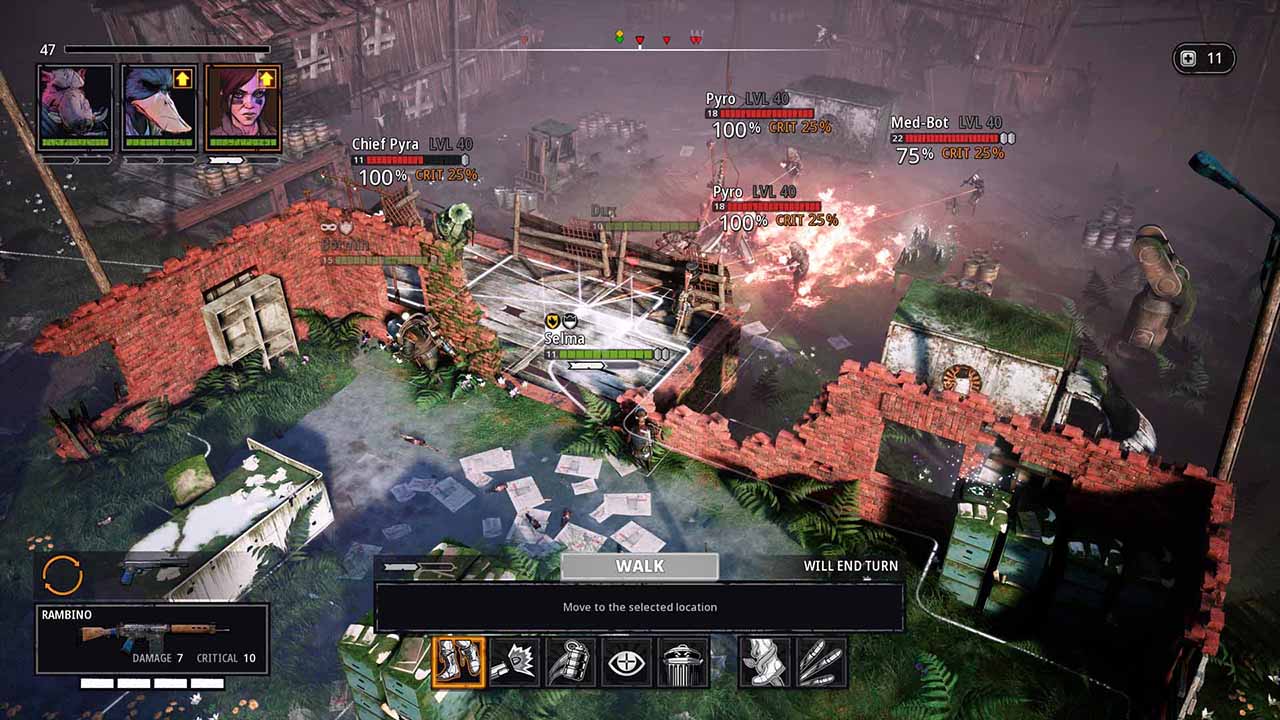
This is a tricky review to write, because on the one hand I can’t recommend Mutant Year Zero: Road to Eden enough. I previously reviewed it on Xbox One and it’s a superb tactical shooter. Similar to XCOM, it’s a turn-based blaster that requires you to navigate cover, manage your squad’s special skills, and rely on an element of chance to deal damage to clever enemies that almost always outnumber you.
The big difference is that you’re playing as a group of anthropomorphic animals and deformed humanoids in a far-future steampunk style world lifted from an old pen and paper RPG. It’s a great set up with some solid humour and compelling, challenging gameplay.
However, the Nintendo Switch version looks atrocious. I get that concessions have to be made to run on the inferior hardware, but I don’t think I’ve ever seen a downgrade this severe in a Switch port. The environments are almost entirely devoid of life or detail. Forest locales are static and bland, stripped of colour and vibrancy, rendered blocky by the missing textures. It’s a cliché to say a current-gen game looks like. PS2 release, but this really, really does. I kept waiting for texture layers to pop in, and they never did.
Likewise, I’m sure characters’ faces used to love when they spoke, but they don’t now. The character models themselves are barely distinguishable from the environments, so blurred and low resolution are they now. Even on the inventory screen they’ve been downgraded to the point that it’s like playing on a standard def TV. Docked or handheld, it’s no different, and I’ll be honest I struggled to get into the game because I’ve enjoyed this adventure on the Xbox One X. I wouldn’t expect the Nintendo Switch to compete in real terms, but when I’m also playing God Eater 3 on the handheld right now and seeing nice visuals and smooth framerates, this just isn’t good enough.
It’s so bad it actually overshadows the rest of the experience, and that’s a shame, because Mutant Year Zero has an excellent campaign filled with memorable characters, real challenge and great encounters. Following Dux (a duck) and Bormin (a boar) and a collection of additional characters (including those found in the DLC) as they attempt to track down a missing group of scavengers who may or may not have discovered Eden, a legendary paradise believed by most to be nothing but myth.
Mixing tactical manoeuvres like “overwatch” and elevated attacks with interesting, cobbled together guns, RPG style loot and unique characters, Mutant Year Zero surprised a lot of people in December by being much better than many expected it to be. Fans of XCOM will feel immediately comfortable with the combat, while in-between fights you can explore environments in real time to uncover hidden caches and materials for crafting and upgrading your weapons at the central hub.
With no other Switch functionality like touchscreens (which, again, would work really, really well here), and with such a horrendous downgrade, it’s really hard to recommend Mutant Year Zero: Road to Eden even to people who don’t own the other consoles. If you can get past the visuals, then there’s a great adventure here with a big heart and a compelling story, but I think for many people that’s going to be a big ask.
5/10
Clannad
Originally released on PC before being ported to PS4 and finally Nintendo Switch
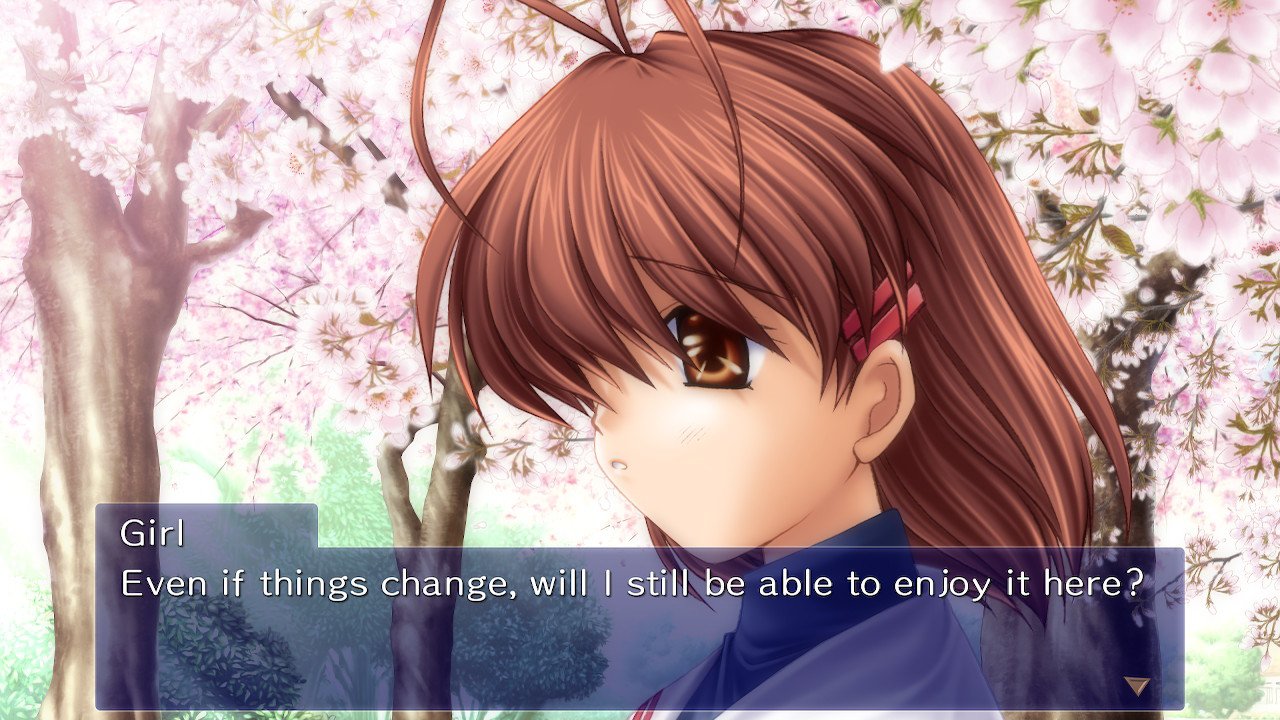
I’ve been waiting for years for a proper English release of Clannad on console and things seemed uncertain for a long time. There was a bit of hope when Prototype had an English build running on a PS Vita at an event but we all know how that turned out. I bought it on PC and even PS4 but visual novels on non portable devices are rarely fun for me. When Clannad was announced for Nintendo Switch, I preordered it the moment it was available and the end result has been more than worth the wait.
The original Clannad visual novel debuted on PC through a Kickstarter project that saw it come to Steam with English support. Clannad is a story that has slice of life, tragedy, humour, coming of age, and a lot more blended into a very long but compelling visual novel. This has multiple endings. Having watched the anime (and After Story) a few times, I was a bit concerned about how the story would be presented here because I loved the anime. As expected, the visual novel is a much better experience and lets you see a lot more of each character than the anime.
On the Switch, Clannad looks great both docked and handheld. It has no performance issues during transitions and is very quick with everything. The real draw of this was portable play for me and it delivered in spades. Not only does it look and play brilliantly in handheld but it also can be completely played with the touchscreen. There are swiping gestures to trigger the menus or backlog as well. This is exactly how visual novels should be brought to the Switch.
Clannad on Nintendo Switch is the best version of the game. It has everything the PS4 version offers plus touchscreen controls that work brilliantly. If you’ve never watched or played it before, this is the version to get. Just keep in mind that it is very long even by visual novel standards.
9/10
God Eater 3
Mick Fraser
Originally released on PS4 and PC and scored 8.5/10 on PS4
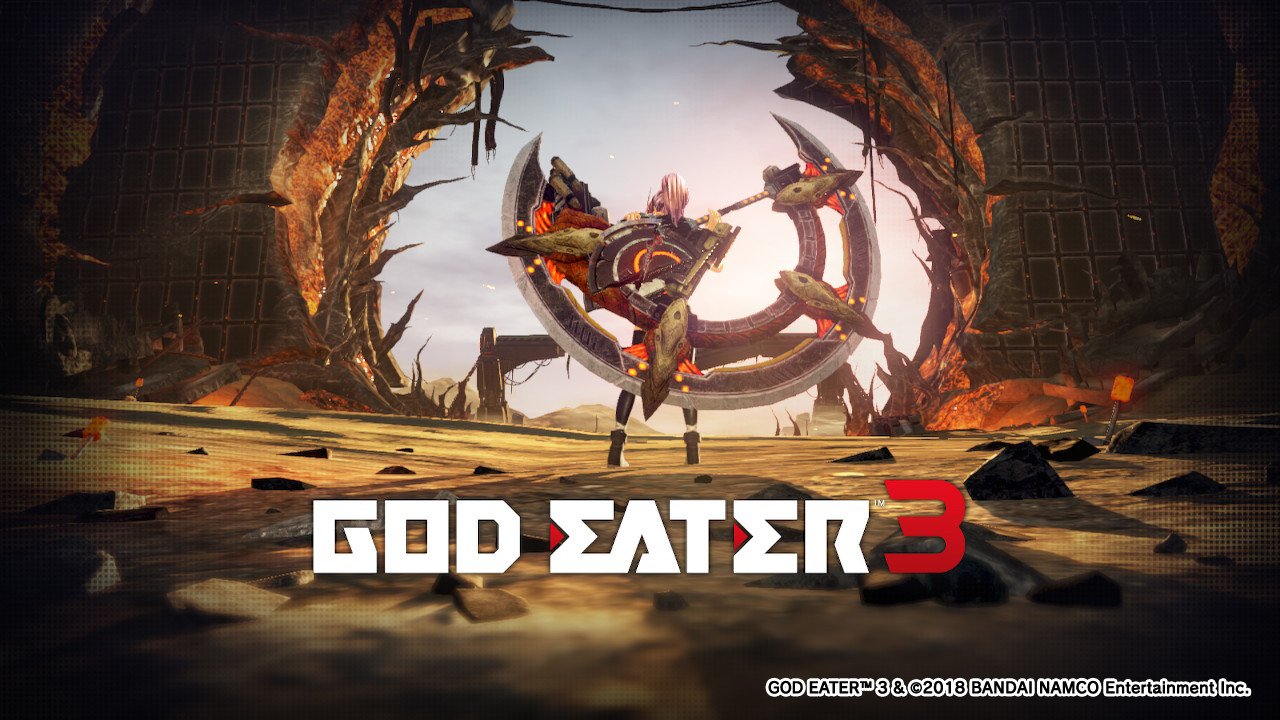
I almost started this review with the words “God Eater 3 is perfect for the Switch” but resisted in order to avoid spouting such hyperbolic bullshit on a weekday morning. Of course, the important takeaway here is that just because something is trite doesn’t necessarily mean it isn’t true. In fact (whispers) God Eater 3 actually is perfect on the Switch. Or as close to perfect as it can be given its natural state on PS4.
It’s such a good fit for Nintendo’s handheld that I actually don’t even want to play it on PS4 anymore. They’ve made a few concessions regarding the environmental detail which, let’s be honest, was probably the worst thing about the original release anyway, but the upshot is that the framerate remains smooth and consistent.
Called a Monster Hunter clone by, well, the sort of person who calls anything that shares a genre a clone, God Eater 3 is really quite a different beast. Or at least a completely differently coloured beast with horns instead of wings and stripes instead of spots. You still hunt giant monsters and fashion weapons out of the bits that drop off, but there are enough disparities nowadays that you can spend dozens of hours in both and not suffer genre-fatigue.
Your character is an AGE (an Adaptive God Eater), an enhanced individual who used weapons called God Arcs and techniques called Burst Arts to battle mutated beasties called Aragami. There’s a central hub where you can connect with various NPCs, including the other members of your party (which can sport up to four members, either AI or player-controlled), upgrade your weapons, change your outfits and equip Arts and Skills.
A continuous story threads it all together and provides some context for all the Aragami-smashing, and there’s a wonderful pace to it all as you float between story missions and optional pursuits to unlock new weapon blueprints and craft consumables and accessories. Melee weapons come in eight flavours including swords, hammers, scythes and giant crescent blades, while they can transform into one of four ranged weapons (rifle, shotgun, sniper, or laser) with a push of the trigger.
You’ll upgrade your party members to compliment your playstyle, cultivating synergy moves with them that you can activate by pressing both triggers once a gauge has been suitably filled by committing stylish violence against the wildlife. The combat is fast and slick, with a variety of moves attached not only to the weapons you’re using but also to your individual Skill slots. The build diversity is massive, although the differences between Aragami often feel less pronounced than in the Monster Hunter franchise, and you won’t often have to adjust your tactics. I’m not saying you can get away with button-mashing, but there’s certainly a much more arcade-like feel to even the bigger fights.
Character models and animations are on-point, and voice acting, either in Japanese or English as both are fully supported, is more than competent throughout. There really isn’t an awful lot to complain about – especially as the Switch version also ships with additional content in the way of story missions, customisation items and optional content that were patched into other platforms later.
God Eater 3 was already a great game and the Switch version actually feels like the best way to play it. It runs smooth whether handheld or docked, and the extra content is a bonus. I’d probably go so far as to recommend this over the PS4 version, though if you already own it I wouldn’t implore you to buy it a second time unless Switch is your main console or you want something awesome to play on the commute. Either way, God Eater 3 is a prime example of a Switch port done right.
8/10




